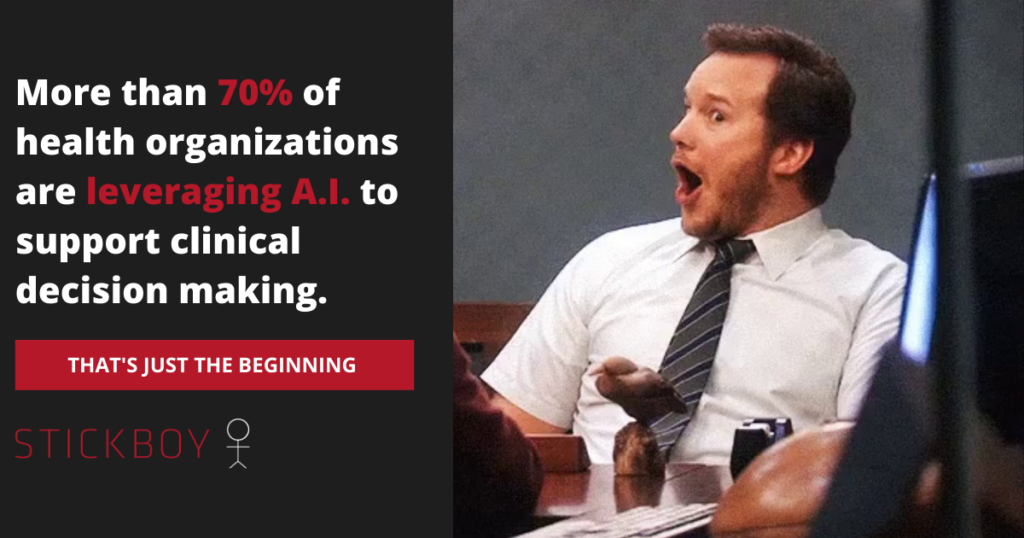4 March 2020
Preempting & Resolving Health Crises Through Artificial Intelligence

We’ve got two quick thoughts for you:
In 2018, the College of Physicians of Philadelphia estimated that the development of a single vaccine takes more than 10 years.
A vaccine for COVID-19 is projected to begin human testing in Q3 2020, less than a year after the initial infections were first reported.
A.I. is powering that.
The 2021 White House budget allocates $249M to go towards the research and adoption of artificial intelligence technologies, and with good reason. A.I. is everywhere, and its domain is ever growing.
A.I. has been popularized as a tool for growing sales, improving customer retention, and driving product innovation; but non-commercial organizations are turning the power of artificial intelligence to new and greater problems.
Ye Olde Disease Control
The first academically recognized vaccination was performed in 1796 by Edward Jenner. He immunized a young boy from Smallpox by infecting him with an equally nasty (but less deadly) version of the disease: Cowpox. And how was this vaccine discovered? The ever popular guess-and-check method.
Let’s fast forward. One of the most widely hailed vaccines, the Polio vaccine, debuted in 1955. It’s creator, Jonas Salk, became a national hero. The vaccine works by injecting “dead” Poliovirus strains into the recipient, triggering an immune response. And how was this vaccine discovered? Guess-and-check again, but with monkeys this time.
(Not-so-fun fact: over 9,000 monkeys were forced to contract poliovirus during the course of mankind’s research into this disease.)
West Nile Virus? Guess-and-check, but with horses. Ebola? Guess-and-check with mice. Then more monkeys. Prion diseases? More mice, more monkeys, and a smattering of guinea pigs.
You get where I’m going with this, right? There’s a better way.
Enter Artificial Intelligence
It’s a whole new world. With the explosive growth of cloud computing, A.I. has gained traction and is quickly expanding outside the bounds of corporate America. Particularly exciting and impacting humankind as a whole, the healthcare industry has made a whole-hearted embrace of these emerging technologies.
Which brings us back to Coronavirus and our quick stats. With over 3,000 deaths and 93,000 infected, we do not have the luxury of waiting 10+ years for a vaccine to be developed by traditional means. Luckily, we don’t have to.
Innovative research labs are utilizing A.I. to fully synthesize and digitally test vaccines before animal or human testing even begins.
From a high level, the process is really quite simple.
- An artificially intelligent “chemist” synthesizes medical compounds. (Sounds difficult, but it’s a process we’ve been doing since 1832.)
- Another A.I. (this one a “doctor”) administers the compound to digital “patients”.
- The results of the compound’s application are documented fed back to the synthesizer.
- New compounds are synthesized by mutating and cross-breeding previously generated compounds.
The best part? It’s already been done. In 2019 Australian researchers announced a new flu vaccine that was developed entirely by artificial intelligence.
And that’s just the flashiest use. When you dig down deeper, A.I. has made great splashes in pandemic management. Data company, BlueDot, has been using A.I. to predict outbreaks for community and zoonotic diseases. Epidemiologists are using A.I. to determine common disease “features” and target outreach efforts. The field of genomics is exploring the use of deep learning to identify genetic diseases well before they begin to express symptoms.
A Whole New World
We live in a scary world, but we have an exciting future. We are face-to-face with a technological revolution. Innovation is taking us to a brighter horizon. Artificial intelligence is saving the monkeys.
Want to keep your business on the forefront of this new wave of emerging technology? Get in touch today.


